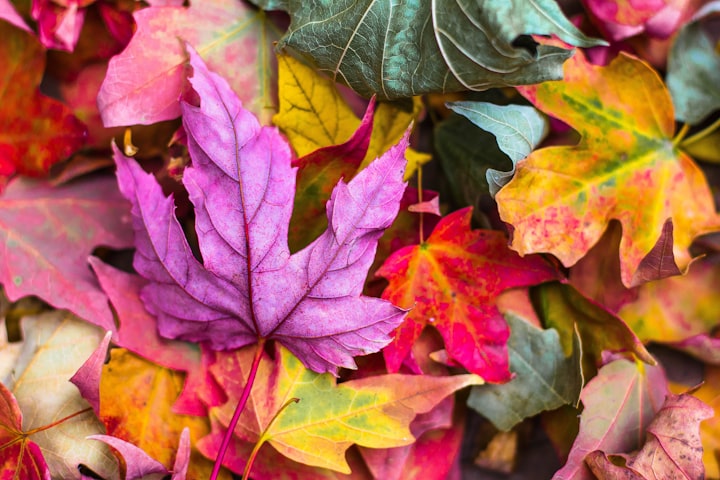Color Me Mine (Part 2)
Colors and their colorful impact.

Colors can be exciting and calming:
Colors can have different effects depending on whether they are deemed warm or cool. Although these concepts are frequently used in art classes, they offer a special perspective on how color can influence a person. Observing warm colors (red, yellow, orange) in excess might become unpleasant. A bearable addition of warm hues can also be the solution to subtly improving your mood if you ever feel worn out, exhausted, or like life is lacking a certain spark.
When it comes to cool hues, those who are looking for a tranquil influence in their environment tend to choose them more. The most relaxing colors are green and blue commonly known as cool colors. The elements that naturally calm us are the sky and the sea, which are represented by the color blue. Blue is a very calming color that can be very powerful, making it a great choice for bedrooms. Similar qualities can be seen in the color green because it represents peace and nature. Seeing green color also has a soothing impact on our mood such as observing trees, plants, grass, etc. Research has demonstrated that identifying the green shades requires less effort, so the eye muscles do not have to work so hard. Both green and blue colors are perfect for locations where you will want to meditate, relax, or get rid of unpleasant thoughts. Similarly, purple is a cool color, and it is typically known to inspire and stimulate creativity. It is a combination of red and blue, so it gives moments of calmness, as well as inspiration and potential stimulation.
Colors can affect the appetite:
Color can control your appetite in addition to your mood. How much you eat may depend on the color of your dining room set or kitchen walls! According to research, those who eat off of red plates are predisposed to consume less food. The majority of some other studies come to the opposite conclusion and have demonstrated that red really stimulates appetite. In fact, red-colored foods are the ones that individuals find the most alluring overall.
White dishes, on the other hand, give the impression of being larger than they are, which encourages you to eat more. Orange is also permitted to influence appetite by enhancing your hunger. So if you want to shed lots of unnecessary pounds, think about updating your kitchen's design.
Colors can influence buying choices:
Numerous marketing firms, grocers, designers, etc. frequently use color psychology, and it works for them. A study claims,
Products or packaging with red labeling will attract your attention faster.
Red is an enticing hue to look at, and hasty customers respond well to items in red. Orange is frequently associated with justice or affordability. Green is commonly known to draw in more environmentally conscious people. The majority of skincare companies package their top skincare brands in white because white may be a hue that connotes purity. Purple is often employed in the beauty industry, particularly when it comes to anti-aging products, and it represents royalty or luxury. Purple packaging tricks customers into paying more by leading them to believe the product has unique qualities. Another frequently used color is black, which is supposed to convey grace or refinement. Although this color is most usually associated with expensive goods, it can also elevate the value of less expensive goods.
Colors have a variety of meanings:
Because it is impossible to isolate one color to a single and distinct meaning, this phenomenon is frequently primarily cultural. You may choose to disregard the fact that the majority of colors have many symbolic or cultural connotations or that they may evoke particular feelings or recollections. Consider the hue black as an illustration. People frequently associate mystery, tragedy, gloom, or void with the color black. However, black can also be used to denote formality or refinement, as in a stylish dress or a nice suit.
These are just a few of the many things that the color itself can represent; none of them are incorrect. For example, red sometimes denotes strength, aggression, power, or danger. However, for some people, the color red conjures up images of lust, passion, and desire. These two separate interpretations could be said to be on opposite ends of the symbolic spectrum, which is an easy argument to make. But in many Western societies, red may stand for each of those things.
Colors determine how we express ourselves collectively, what we are subconsciously drawn to, how they affect our moods and many other aspects of our existence. Since each person is unique, not everyone will react to colors in the same way because of the significantly different elements that people see within the same hue, it can be difficult to understand how color impacts mood. In addition, there are vivid general social or artistic influences on a color that may have an impact on us.
You may read: Color Me Mine (Part 1)
About the Creator
Enjoyed the story? Support the Creator.
Subscribe for free to receive all their stories in your feed. You could also pledge your support or give them a one-off tip, letting them know you appreciate their work.






Comments
There are no comments for this story
Be the first to respond and start the conversation.